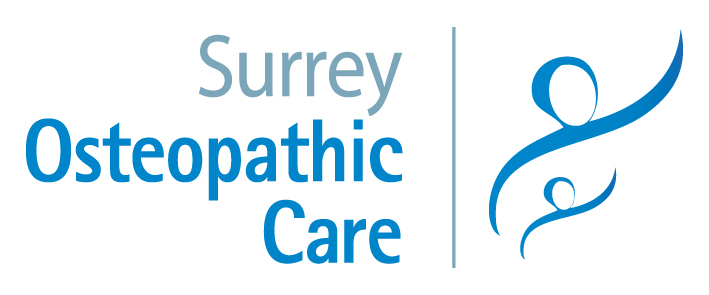Scoliosis – What Can Be Done?
What is scoliosis?
Scoliosis is a common condition where the spine twists and curves to the side. It can affect people of any age, from babies to adults, but most commonly it starts in children aged 10 to 15. The prevalence of medially significant curves is substantially higher in girls than boys. Curve pattern and prevalence of scoliosis is not only influenced by gender, but also by age of onset and genetic factors.
What are the causes?
In around 8 in every 10 cases, the cause of scoliosis is unknown. This is called idiopathic scoliosis and sometimes runs in families. Less commonly, scoliosis may be caused by:
the bones of the spine not forming properly in the womb (congenital scoliosis)
an underlying nerve or muscle condition (neuromuscular scoliosis)
wear and tear of the spine with age (degenerative scoliosis)
What are the main signs and symptoms?
A visibly curved spine
Leaning to one side
Uneven shoulders
One shoulder or hip sticking out
The ribs sticking out to one side
Clothes not fitting well
Back pain
What are the treatment options?
Treatment for scoliosis depends on your age, how severe the curve is, and whether it’s likely to get worse with time.
Babies and toddlers may not need treatment as the curve might improve over time. A plaster cast or plastic brace may be fitted to their back to stop the curve getting worse as they grow.
Older children may wear a back brace to stop the curve getting worse until they stop growing. Sometimes surgery may be needed to control the growth of the spine until an operation to straighten it can be done when they stop growing.
Adults may need treatment to relieve pain and, very occasionally, surgery.
Most people are able to live normal lives and can do most activities, including exercise and sport. Regular exercise is important for children with spinal curvature since it can help improve muscle strength and may help reduce any back pain.
How can osteopathy help?
There is currently reliable evidence to suggest that other therapies, such as osteopathy, can help correct a curved spine or stop it getting worse. Important aspects considered by the osteopathic approach include:
Posture adopted during the day can influence scoliosis in different ways. Standing is associated with an increase in spine’s curvature, as a result of gravitational forces, and patients tend to bear weight on one side. Children spend many hours in a sitting position and improper postures may result in the progression of spinal curvatures (Czupryna et al, 2012). Furthermore, regular carrying of schoolbags can affect spinal curvature and the effects depend on the mode of loading and the weight of the carriage (Chow et al, 2006). Osteopaths can evaluate your posture and improve the musculoskeletal dysfunctions and strains affecting it (Kron, 2003).
Patients with scoliosis develop an asymmetric breathing pattern, which contributes to the progression of spinal curvature. The lung in the convex side is larger than the counterpart in the concave side: during inhalation air fills both lungs but the further tends to be more inflated than the latter, while during exhalation, as a result of increased chest wall elasticity, more air is expelled from the concave side. The results are that the size differential of the lung increases with each deep breath (Lehnert-Schroth, 2007). Osteopath can help you restoring a correct breathing pattern treating the musculature and joints associated with the breathing pattern (Chaitow, 2002).
Scoliosis can cause back pain but the correlation is still not clear. In fact, some studies show that definitive correction of spinal curvature is not always associated to a symptoms reduction (Balaguè et al, 2016). Considering evidences about efficacy of osteopathic treatment in back pain, particularly low back pain and neck pain, patients with scoliosis can have a great beneficial effect in managing the symptoms correlated to the condition (Franke et al, 2014; Scwerla et al, 2008).
References
Balaguè F, Pelisè F (2016). Adolescent idiophatic scoliosis and back pain. Scoliosis and Spinal Disorders. 11:27.
Chaitow L, Bradley D, Gilbert C (2002). Multidisciplinary approaches to breathing pattern disorders. London: Churcill Livingstone. p 86 and p 51.
Chow DH, Kwok ML, Cheng JC (2006). The effect of backpack weight on the standing posture and balance of schoolgirls with adolescent idiopathic scoliosis and normal controls. Gait Posture. 24: 173-181.
Czupryna K, Nowotny-Czupryna O, Nowotny J (2012). Neuropathological aspects of conservative treatment of scoliosis: a theoretical view point. Ortopedia, Traumatologia, Rehabilitacja. 14: 103-114.
Franke H, Franke JD, Fryer G (2014). Osteopathic manipulative treatment in nonspecific low back pain: a sistematic review and meta-analysis. BMC Musculoskeletal Disorders. 15: 286.
Kron J (2003) Osteopathy. Journal of Complementary Medicine. 2(5): 22-24, 26-27.
Lenhert-Schroth C. (2007). Three-dimensional treatment for scoliosis: physiotherapeutic methos for deformities of the spine. Palo Alto: Martindale Press.
NHS choices (2017). Scoliosis. Available at: https://www.nhs.uk/conditions/scoliosis/ [accessed 22th May 2018].
Schwerla F, Bischoff A, Nurnberger A, Genter P, Guillaume J, Resch K (2008). Osteopathic treatment of patients with chronic non-specific neck pain: a randomised controlled trial of efficacy. Complementary Medicine Research. 15(3). 138-145.
